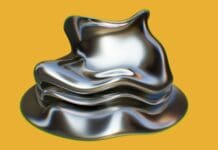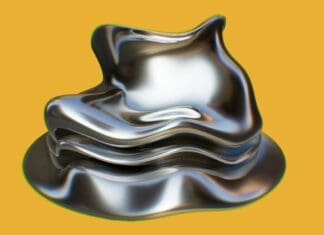This post is also available in:
 עברית (Hebrew)
עברית (Hebrew)
Researchers from the Institute of Physics (IOP) at the University of Amsterdam collaborated with researchers from Stanford University in the US to make the world’s thinnest lens that’s just three atoms thick and uses quantum effects instead of using their curvature to bend light, like regular lenses.
While the regular lenses we are used to look like slightly curved glass in various forms and combinations, the researchers took a different approach. They used a unique material called tungsten disulfide (WS2) to construct a flat lens half a millimeter wide and 0.6 nanometers (nm) thick.
But how does it work? First let’s look at a regular lens: a typical curved lens works on refraction. Given its thickness, light is first bent when it enters the glass and then bends once again when it leaves. Then, based on the curvature of the lens, objects appear larger or closer than they really are.
The lens made by the researchers works on a principle different from light-refracture using curvatures- it uses the principle of diffraction. According to Interesting Engineering, this is called a Fresnel or zone plate lens, and the size or distance between the rings determines its focal length. The lens works due to quantum effects with the WS2 molecules, where they first absorb light by sending an electron to a higher energy level.
Due to its unique technological properties, the lens can only work for specific wavelengths and therefore only some of the light is processed, with the rest passing through unaffected. While this might appear as a disadvantage, the researchers reportedly plan to use this feature in applications where light needs to pass through.
Jorik van de Groep who was involved in the work explains: “The lens can be used in applications where the view through the lens should not be disturbed, but a small part of the light can be tapped to collect information. This makes it perfect for wearable glasses such as for augmented reality.”


























